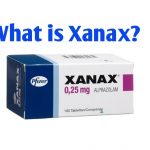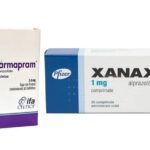How Many Xanax Will Kill You?

Xanax is the brand name for Pfizer’s brand of Alprazolam, a short-acting tranquilizer of the triazolobenzodiazepine class, which are benzodiazepines fused with a triazole ring. Pfizer is an American multinational pharmaceutical and biotechnology corporation headquartered in Manhattan, New York City.
Xanax works by decreasing abnormal excitement in the brain. The Food and Drug Administration (FDA) approved it in October 1981.
Benzodiazepines act on the brain and central nervous system (CNS) to produce a calming effect. Xanax is a federal controlled substance (C-IV) because it can be abused or lead to dependence. Keep this medicine in a safe place to prevent misuse and abuse. Selling or giving away Xanax may harm others, and is against the law. Tell your healthcare provider if you have abused or been dependent on alcohol, prescription medicines or street drugs.
What is the typical prescribed dosage?
The prescribed amount typically ranges from 0.25 to 0.5 milligrams (mg) per day. This amount may be split between three doses throughout the day. Your doctor may gradually increase your dose until your symptoms are controlled. In some cases, the prescribed amount may be as high as 10 mg per day.
How does Xanax work?
Xanax slows down the movement of brain chemicals that may have become unbalanced, resulting in a reduction in nervous tension and anxiety. Xanax works by boosting the effects of a natural chemical called gamma-aminobutyric acid, which is made in the brain. Xanax is used to treat anxiety disorders and anxiety caused by depression. Xanax is also used to treat panic disorders with or without a fear of places and situations that might cause panic, helplessness, or embarrassment (agoraphobia).
How many Xanax will kill you?
The amount that could potentially kill a person or lead to an overdose varies widely from person to person. It depends on many factors, including:
- how your body metabolizes the medication
- your weight
- your age
- if you have any preexisting conditions, like a heart, kidney, or liver condition
- if you took it with alcohol or other drugs (including antidepressants)
In clinical studies in rats, the LD50 the dose that caused half of the rats to die ranged from 331 to 2,171 mg per kilogram of body weight. This suggests that a person would have to take several thousand times the maximum prescribed dose to fatally overdose.
However, the results of animal studies don’t always translate directly for human specifications. Overdose is possible at any dose higher than your prescribed amount.
People older than 65 have an increased risk for serious side effects, including an overdose. Older adults are typically prescribed lower doses of Xanax because they’re more sensitive to its effects.
Overdose on Xanax is possible, especially if you take Xanax with other drugs or medications. Mixing Xanax with alcohol can also be fatal. Most severe or fatal overdoses happen when Xanax is taken with other drugs especially opioid pain medications or alcohol. If you’re taking Xanax, be sure to tell your doctor about any other medications you’re taking. They may recommend an alternative medication.
What are the signs and symptoms of Xanax overdose?
With it’s quick onset of action, some of the early signs of a Xanax overdose may resemble the side effects of regular Xanax use, which may include:
• Changes in appetite.
• Constipation.
• Difficulty concentrating.
• Difficulty passing urine.
• Drowsiness.
• Dry mouth.
• Headache.
• Increased salivation.
• Irritability.
• Joint pain.
• Light-headedness.
• Nausea.
• Changes in sex drive/ability.
• Tiredness.
• Unusual talkativeness.
While few of these signs and symptoms serve as an accurate gauge for the likelihood of or progression toward an overdose, you should pay close attention to how the person feels for the next several hours following the onset of any of these symptoms. If you experience any of these symptoms, do not take any more Xanax and do not consume any other drugs or alcohol. If the symptoms worsen, seek medical attention immediately.
Some people experience more severe side effects and warning signs of an overdose, including :
• Confusion.
• Depression symptoms, such as depressed mood or suicidal thoughts or actions.
• Difficulty breathing or labored breathing.
• Difficulty speaking or annunciating.
• Hallucinations (seeing, hearing, or feeling things that are not there).
• Loss of coordination or balance.
• Memory problems.
• Seizures.
• Unusual changes in mood or behavior.
• Yellowing of the eyes or skin.
Any of these signs or symptoms can indicate a potential overdose or a serious adverse reaction to the drug. If a person is overdosing from Xanax use, they may have symptoms that include :
• Profound confusion.
• Severe coordination problems or loss of balance.
• Severe drowsiness and an inability to stay awake.
• Significantly slowed breathing.
• Unresponsiveness.
• Loss of consciousness.
• Coma.
In case of overdose, call the poison control helpline at 1-800-222-1222. Information is also available online at https://www.poisonhelp.org/help. If the victim has collapsed, had a seizure, has trouble breathing, or can’t be awakened, immediately call emergency services at 911. You can find useful information on: How to Manage Xanax Side Effects





